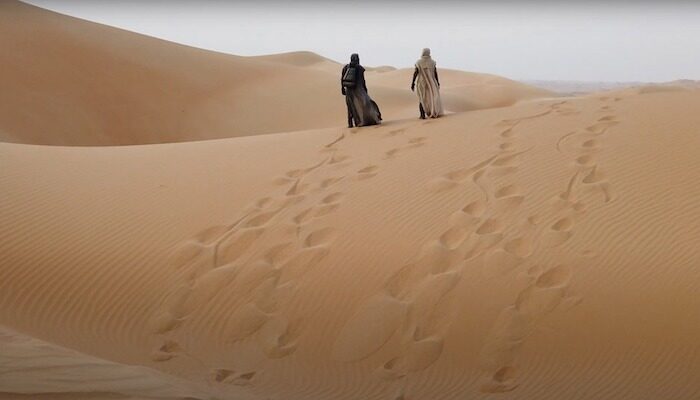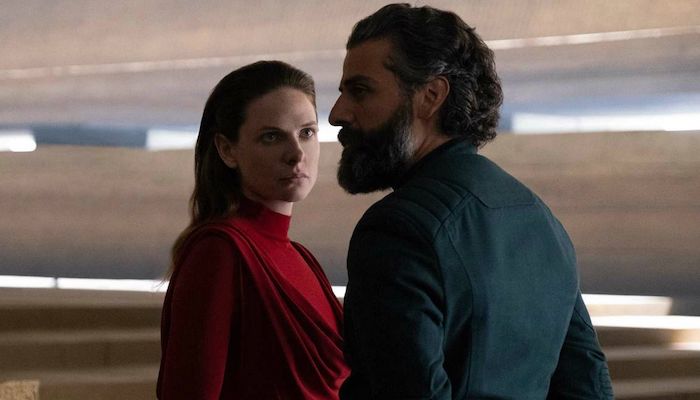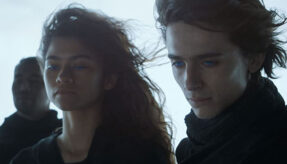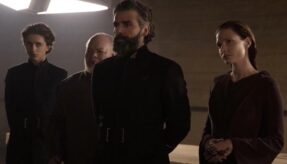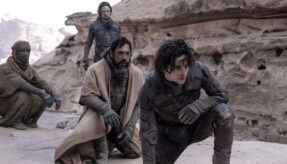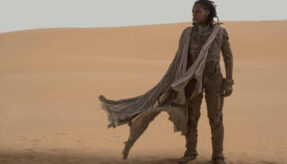Film Review: DUNE: PART 1 (2021): An Entertaining Scifi Movie Combining Style, Originality, & The Best Adaptation of The Source Material
Table of Contents
The Little Things
It is the little things, the presence of certain elements, a specific attention to detail, that make Dune: Part 1 shine as a film.
The Arrakin sun and the heat of Arrakis are “characters” very early in the film, creating and inhibiting the way of life for an entire society. It is amorphous yet static, punishing some characters, rewarding others.
Composer Hans Zimmer’s music during Padishah Emperor Shaddam Corrino IV’s Herald scene is sensational, with beautiful ebbs and escalations.
The grandeur of part of the Padishah Emperor’s court, their clothing, the gravitas of the moment, the way characters carry themselves, is evocative of the former glory of Star Wars when that science fiction film franchise took itself seriously.
The rain entry of the sisters of the Bene Gesserit later in the film, Paul’s pain box test, and the apprehension before the test, are exquisitely shot and orchestrated but it is during the conversation as Jessica and Reverend Mother Mohiam approach the Bene Gesserit ship that substantive narrative and visual meat-on-the-bones occurs, rewarding the eyes as well as the ears if the scene is carefully observed. It’s in Jessica’s deference to the Reverend Mother, the way Jessica holds fast as the Bene Gesserit space ship takes off, the reveal of Paul in the mist, and the information that Jessica relates to Paul about what he might be (with the viewer taking note of the separation between the two characters – the void between the Bene Gesserit and her son – Jessica temporarily reverting back to all she had been before the Atreides).
Widescreen Scope to Visuals
Few films created in the modern age of cinema are specifically engineered for cineplexes. Director Christopher Nolan creates them, and Villeneuve has with Dune: Part 1. If you view Dune on the small screen, even with a superior home theater system, it will not be the same experience. It would be a disservice to the viewer’s movie-watching experience to see Dune on anything less than the big screen – the scope and vistas of the film are that large and impressive.
Blade Runner 2049 achieved a similar yet claustrophobic scope due to its mostly urban settings. In Dune, Villeneuve’s widescreen vision is fully realized. Think of the beautiful moments in Ben-Hur created and captured by director William Wyler. Villeneuve does that in Dune: Part 1, e.g., Lady Jessica exiting the Atreides’ ship, freshly arrived on Dune, her ladies-in-waiting carrying the trailing portion of her flowing dress.
With a pulled-back-camera on moments like this, it’s not just Lady Jessica who is the centerpiece of the shot, its everything – Lady Jessica and the environment (the ladies, the dust in the air, the soldiers, the ships in the background, and the crowd watching), all captured as Jessica walks. It’s beautiful.
Related Articles
FilmBook's Newsletter
Subscribe to FilmBook’s Daily Newsletter for the latest news!







